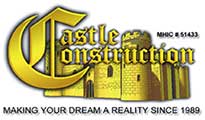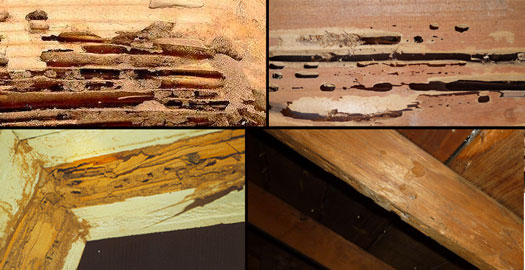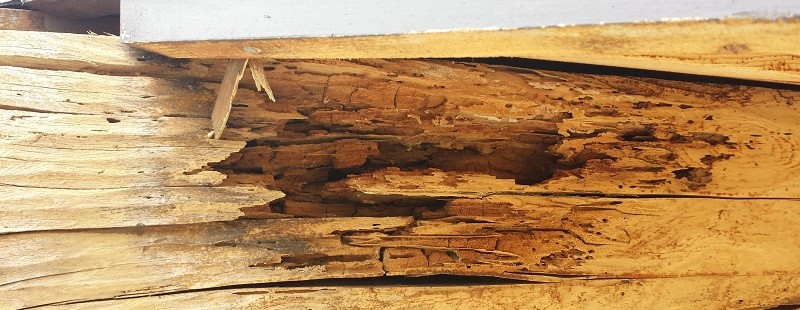Pest damage repair can be effectively addressed with the best guide available, ensuring quick and efficient restoration of the affected area. Pests can wreak havoc on our homes and properties, causing damage that needs immediate attention. When faced with pest-related destruction, it becomes vital to have access to the best guide for pest damage repair. This guide acts as a comprehensive resource, offering step-by-step instructions to swiftly restore the affected area. By following the recommended procedures and techniques, homeowners can efficiently address structural, cosmetic, and functional issues caused by pests.
Best Guide Pest Damage Repair Tips
Pest damage can cause significant problems to your property if not addressed promptly. It is essential to take immediate action when you notice any signs of pest activity in your home, as delaying the repairs can lead to further damage and costly repairs.
Termites, ants, rodents, and carpenter bees are common pests responsible for property damage. These pests can weaken the structural integrity of your home and cause extensive damage to your furniture, walls, and electrical systems.
To effectively repair pest damage, it is crucial to identify the source of the infestation and eliminate it. This may involve hiring professional pest control services to exterminate the pests and prevent future infestations. Additionally, repairing any existing damage by replacing or repairing the affected areas is vital.
Prompt attention to pest damage not only helps preserve the value and aesthetics of your property but also ensures the safety and well-being of your family. By taking immediate action and following the best practices for pest damage repair, you can minimize the impact of pests on your property and avoid further problems in the future.
Identifying Pest Damage
Identifying pest damage is the first step in effectively addressing and repairing the problems caused by pests. By being aware of the signs of infestation and damage, you can take prompt action to prevent further deterioration. Common signs include chewed or gnawed areas, droppings, tracks, and nests. However, it is important to differentiate between different pest types, as each may cause specific damage. For instance, termites can cause structural damage, while rodents may chew on wires and insulation. By understanding the specific signs and damage associated with each pest, you can tailor your pest control efforts accordingly. This will not only help mitigate the existing damage but also prevent future infestations and related problems.
Assessing The Extent Of Damage
Professional inspection techniques offer a reliable approach to determine the impact of pest damage on property. An experienced inspector will thoroughly evaluate the structural implications caused by pests, focusing on critical areas such as foundations, walls, roofs, and electrical systems. The assessment involves a comprehensive examination of the affected areas to identify specific vulnerabilities and potential risks. Assessing the extent of damage encompasses visually inspecting for signs of infestation, determining the species involved, and gauging the level of destruction. This evaluation is crucial in formulating an effective remediation plan and ensuring the restoration process addresses all areas requiring attention.
Choosing Repair Methods
Choosing the right repair method for pest damage can be a crucial decision when it comes to effectively restoring your property. One factor to consider is whether to opt for a DIY approach or hire professional repair services.
In some instances, taking a DIY approach can be cost-effective and manageable. Homeowners may choose to repair minor pest damage themselves, saving money on labor costs. DIY projects also provide an opportunity to address the issue immediately and may be suitable for smaller scale damage.
However, it’s important to assess the extent of damage and the complexity of repairs needed. Professional repair services typically have the necessary expertise and equipment to handle extensive pest damage. They can provide a comprehensive assessment and implement suitable repair techniques to ensure the problem is effectively resolved.
Materials For Damage Repair
Discover the best materials for pest damage repair, ensuring a comprehensive guide to restore your property’s integrity. Trust the experts to provide you with effective solutions for a seamless restoration process.
Durable Materials And Tools For Long-term Fixes
When repairing pest damage, it is essential to use durable materials and tools that will provide long-term fixes. One such material is pressure-treated wood, which is resistant to rot and insect damage. Additionally, using metal mesh screens can help prevent future infestations by acting as a barrier against pests.
Epoxy resin is another useful material for damage repair, as it creates a strong bond and seals any cracks or holes. Additionally, concrete patching compound can be used to fill in gaps or cracks in concrete caused by pest damage.
Appropriate tools such as protective gloves, safety glasses, and a hammer or power drill are necessary for proper repair work. These tools ensure the safety of the person carrying out the repairs and help achieve the desired results.
By using these durable materials and tools, you can effectively repair pest damage and ensure long-lasting solutions.
Preventative Measures
Preventing pest damage is essential to protect your repaired areas. Here are some effective strategies to pest-proof your home.
First, seal all openings such as cracks, gaps, and holes in walls, floors, and ceilings. Use caulk, steel wool, or expanding foam to block entry points. Next, maintain a clean environment by keeping your home free from clutter, food debris, and standing water, as pests are attracted to these conditions. Regularly inspect and repair damaged screens on doors and windows to prevent insects and rodents from entering.
Install weatherstripping around doors and windows to eliminate gaps, ensuring a tight seal. Consider using wire mesh or hardware cloth to cover vents, chimneys, and other openings that need ventilation. In addition, store firewood away from your home to deter pests from nesting in it.
Remember to trim vegetation around the repaired areas to reduce hiding spots for pests. Finally, regularly apply pest control treatments to keep pests at bay. By implementing these preventive measures, your repaired areas will be well-guarded against potential pest damage.
Step-by-step Repair Guide
Here, you will find detailed instructions for common pest damage scenarios to help you effectively repair any damage caused by pests. Whether it’s damage from termites, rodents, or other pesky invaders, follow these steps to restore your property.
- Assess the Damage: Before you begin repairs, thoroughly inspect the affected areas to determine the extent of the damage. Take note of any structural issues or potential safety hazards.
- Eliminate the Pest: It is crucial to address the pest problem before initiating repairs. Consult a professional exterminator or take appropriate steps to remove the pests from your property.
- Clean and Disinfect: Clean the damaged areas to remove any debris, droppings, or other residues left behind by the pests. Use appropriate cleaning agents to disinfect and sanitize the area.
- Repair and Replace: Depending on the damage, repair or replace any damaged materials such as wood, insulation, or drywall. Ensure that all repairs are done in accordance with proper building codes.
- Prevent Future Infestations: Take preventative measures to avoid future pest problems. Seal any entry points, repair cracks or gaps, and maintain cleanliness to discourage pests from returning.
- Regular Maintenance: Stay proactive by conducting regular inspections and maintenance to address any signs of new pest activity promptly.
Handling Future Pest Threats
After completing pest damage repair in your home, it is crucial to take proactive measures to prevent future infestations. Regular monitoring and maintenance are essential to safeguard your property. Here are a few tips to help you handle future pest threats:
- Inspect your home regularly: Conduct routine inspections around your property to identify and address any signs of pest activity.
- Seal entry points: Secure potential entry points like cracks, gaps, or crevices in your walls, windows, doors, and foundation to prevent pests from entering.
- Maintain cleanliness: Keep your home clean and tidy, minimizing food and water sources that attract pests. Dispose of garbage properly and promptly.
- Trim vegetation: Regularly trim branches and shrubs that touch your home, as they can serve as bridges for pests to access your property.
- Manage moisture levels: Repair any leaks or plumbing issues to reduce excess moisture, which attracts pests.
- Store food properly: Invest in airtight containers to store food, preventing pest access.
- Consult professionals: When faced with persistent pest problems, seek assistance from pest control experts for a tailored approach.
FAQ for Pest Damage Repair
How Do You Repair Wood After Termite Damage?
To repair wood after termite damage, first, remove all infested wood. Then, treat the area with a proper termite control solution. Once the infestation is eliminated, replace damaged wood with new pieces of lumber. Finally, apply a protective finish to prevent future termite attacks.
Can A Termite Infested House Be Saved?
Yes, a house infested with termites can be saved. Immediate action by professional exterminators is necessary to eliminate the termites and prevent further damage. Timely treatment can save the structure, but it is essential to address the infestation promptly.
How Do You Repair Termite Damaged Floor Boards?
To repair termite damaged floor boards, follow these steps: 1. Remove the damaged boards carefully. 2. Treat the area with a termite-killing solution. 3. Replace the removed boards with new ones, ensuring a secure fit. 4. Sand and finish the repaired area to match the rest of the floor. 5. Take preventive measures to avoid future infestation.
Which Method Is Best For Pest Control?
The best method for pest control depends on the specific pest and situation. Common options include using pesticides, traps, or natural repellents. It’s important to consider the effectiveness, safety, and environmental impact of each method. Consulting with a professional pest control company can help determine the best solution for your needs.
What Can Pest Damage Repair Services Help With?
Pest damage repair services can help you address issues caused by pests such as termites, rodents, or insects, restoring your property to its pre-infestation condition.
How Can I Prevent Pest Damage To My Home?
To prevent pest damage, make sure to seal any cracks or openings in your home, keep your living spaces clean and clutter-free, store food properly, and regularly inspect your property for signs of infestation.
Conclusion
To wrap it up, this comprehensive guide provides you with all the essential information needed to address pest damage effectively. By understanding the signs of pest infestations and following the suggested remedies, you can protect your home from further harm. Remember, early detection and proactive measures are key to minimizing pest-related issues. With this knowledge, you can confidently tackle any pest problems that may arise and ensure a pest-free environment for yourself and your loved ones.


